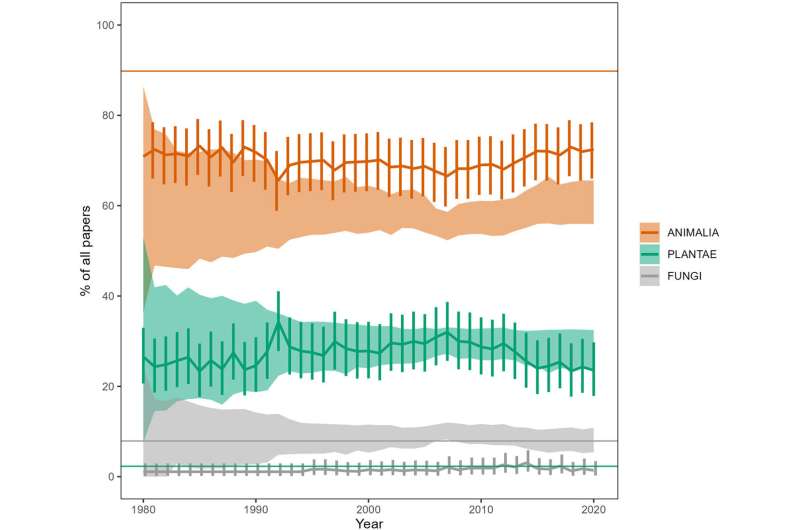
A new study warns bias towards popular animals in conservation research might see some important, but less spectacular, species suffer “silent extinctions” as their plight goes unrecognized.
Jean-Paul Hobbs, a senior research fellow at James Cook University and co-lead on the study, said despite a 35-fold increase in the number of published research articles, conservation biology research still appeared to be biased toward popular species and ecosystems and there was seemingly little attention paid to within-species (genetic) diversity.
‘”It’s important that we know why this is occurring because with significant biases remaining in conservation research, there is potential for critical gaps in our understanding of how to best conserve biodiversity across global ecosystems,”‘ Dr. Hobbs said.
The team analyzed trends over the past four decades in more than 17,500 research articles published in four leading conservation-focused journals. Their work has culminated in a new study titled “Global trends and biases in biodiversity conservation research” published in Cell Reports Sustainability that examines how research efforts have evolved.
JCU Adjunct Senior Research Fellow Dr. Iain Caldwell, who co-led the study said the team found biases in conservation biology research remain entrenched with research efforts increasingly concentrated on the same species, with many of the most-studied species having low conservation risk.
“We also found animals are generally heavily overrepresented while plants, fungi, and freshwater ecosystems are underrepresented in research, and in terms of scale, genetic diversity within species receives the least overall attention,”‘ Dr. Caldwell said.
‘”Findings also showed research is focusing on terrestrial systems and underrepresenting marine and freshwater ecosystems.”‘
Dr. Hobbs said an increasing bias in genetic studies toward non-threatened species means resources are deflected from species in most need of genetic research.
The study also examined trends in genetic research, finding that although the proportion of genetic studies in conservation journals increased significantly from the 1980s to 1996, it has declined since then.
“Threatened species are most vulnerable to reductions in genetic diversity, which forms the basis for adapting to future challenges,”‘ Dr. Hobbs said.
“Bias in research priorities is likely to contribute to bias in extinction patterns. It could also mean population declines in understudied species go completely unnoticed, leading to silent extinctions, possibly even before species are discovered.”‘
Corresponding author on the study and Population Geneticist Dr. Áki Jarl Láruson from the Hafrannsóknastofnun–Marine & Freshwater Research Institute in Iceland said while efforts to conserve biodiversity are increasing, within-species diversity appears to be receiving the least overall attention.
‘”This shift in research priorities can have critical implications for the long-term adaptive potential of vulnerable systems.”
Both Dr. Hobbs and Dr. Caldwell emphasized the need for a shift in research priorities.
“Our findings suggest that biases in conservation research are deep-rooted and could lead to an uneven loss of biodiversity and a limited understanding of ecosystem dynamics,”‘ Dr. Caldwell said.
‘”Addressing this imbalance could result in more comprehensive conservation strategies that account for all levels of biodiversity.”
Dr. Hobbs said biases may be re-enforced by funding. When funding is limited, researchers may seek to maximize impact by returning to ongoing conservation efforts or focusing on high-profile species.
“Deliberate funding and targeted efforts are needed to investigate both understudied species and ecosystems.
“A broader, more inclusive approach will ensure more effective and equitable conservation efforts across multiple levels of biodiversity, alleviate impediments to biodiversity targets, and ultimately prevent further extinctions.”
More information:
Iain R. Caldwell et al, Global trends and biases in biodiversity conservation research, Cell Reports Sustainability (2024). DOI: 10.1016/j.crsus.2024.100082
Citation:
Silent species face extinction: Study highlights bias in conservation research (2024, May 23)
retrieved 23 May 2024
from https://phys.org/news/2024-05-silent-species-extinction-highlights-bias.html
This document is subject to copyright. Apart from any fair dealing for the purpose of private study or research, no
part may be reproduced without the written permission. The content is provided for information purposes only.







